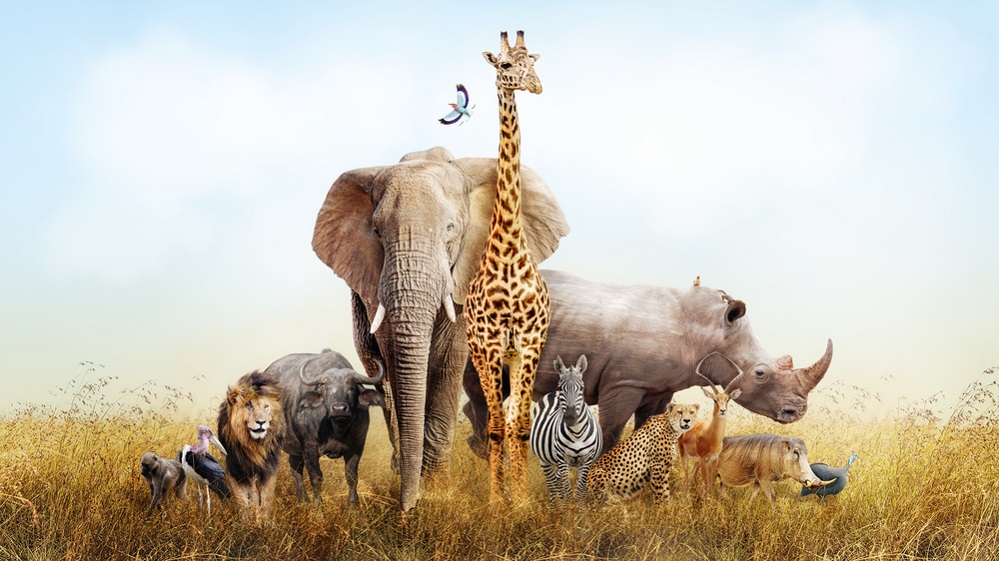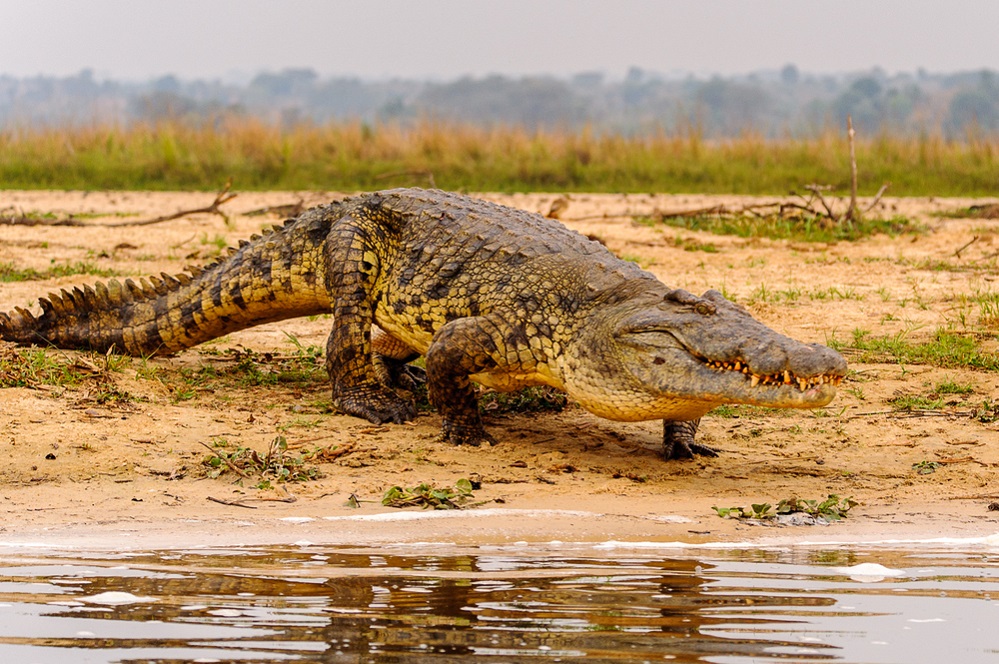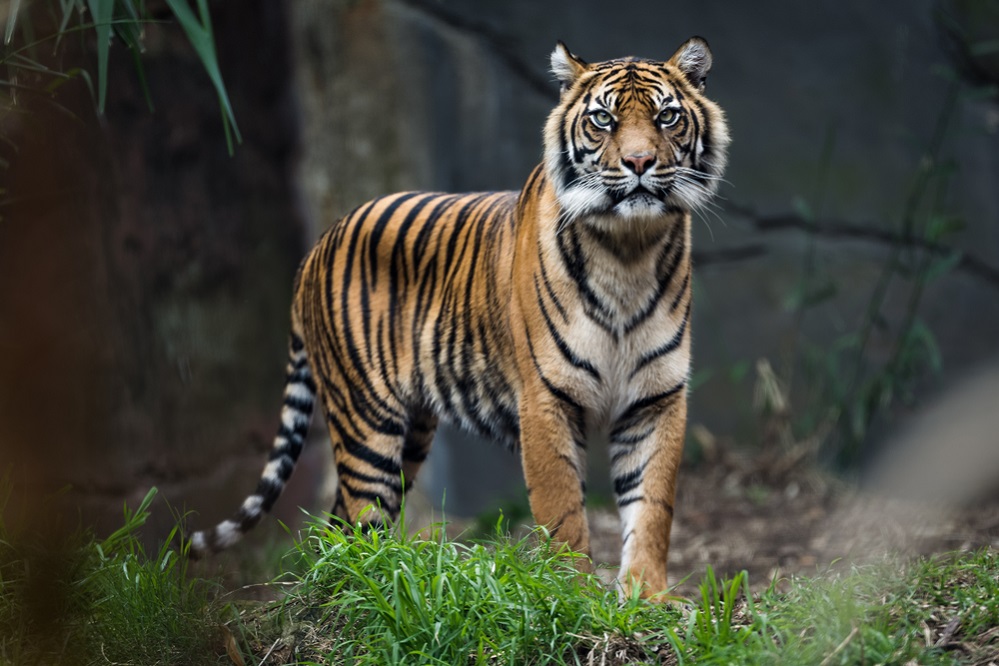The lion is one of the largest, strongest, and most powerful felines worldwide, second only in size to the Siberian Tiger. As the largest cats native to the African continent, lions are celebrated for their majestic grace and royalty.
Belonging to the Felidae family, lions are scientifically classified as Panthera leo, known as the Proailurus Lemanensis, which translates to “first cat”.
Renowned as the “King of the jungle”, lions hold unparalleled popularity worldwide.
Let’s explore the rich history, cultural significance, geographic range, behavior, biological characteristics, and much more about this majestic beast.
Evolution and Origin of Lion
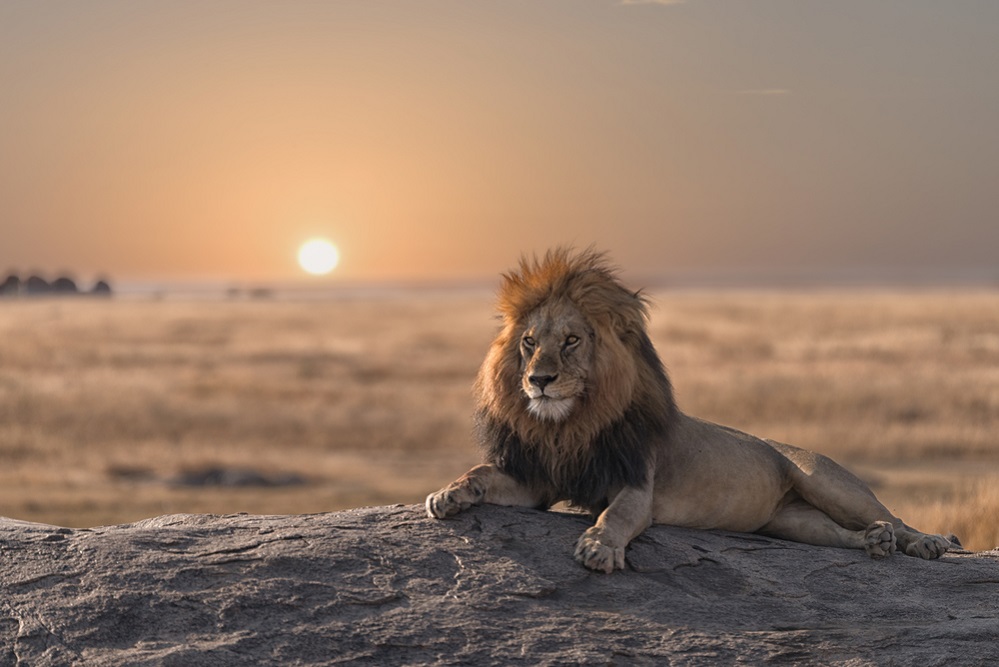
Fossil evidence suggests that the earliest lion-like cat appeared in Laetoli, located in Tanzania, East Africa, during the Late Pliocene period, approximately 2-3 million years ago. During this era, these early felids likely occupied a similar ecological niche as today’s lions, hunting large herbivores and occupying savanna habitats.
Examination of fossil samples has suggested that the leopard or jaguar may have served as the primary ancestral species of the lion. However, the most recent depiction suggests that the jaguar was the lion’s most immediate ancestor.
Fossil evidence suggests that lions were once widespread across vast territories, including Africa, Europe, the Middle East, and certain regions of Asia.
The evolutionary journey and origins of lions constitute a remarkable narrative spanning millions of years. From their initial roots in Africa to their status as iconic symbols of strength and courage, lions continue to captivate our imagination and evoke admiration and respect for the natural world.
Scientific Classification
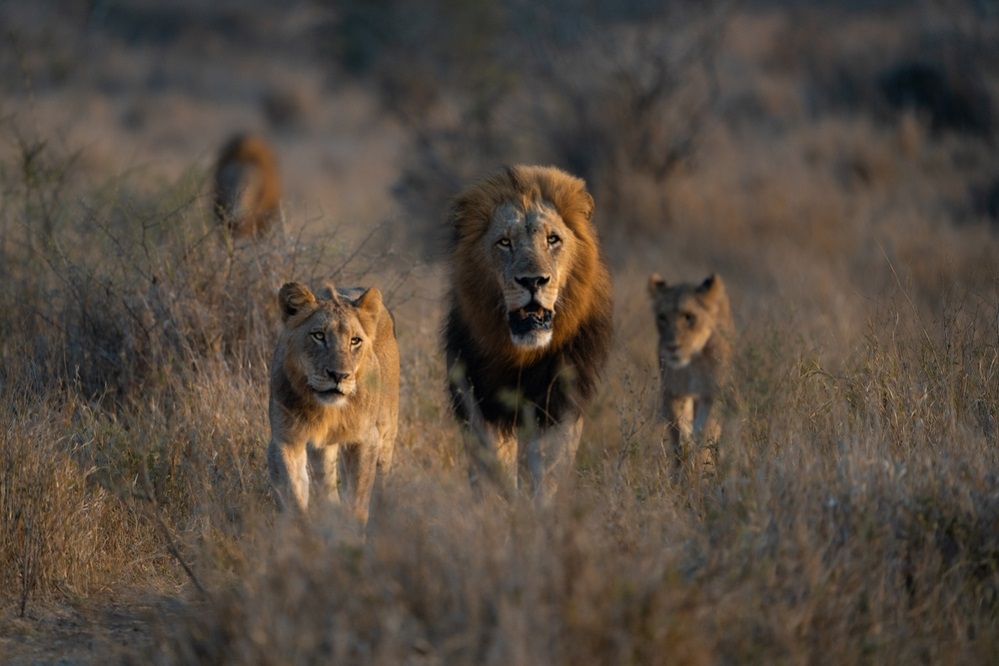
Kingdom
Animalia
Phylum
Chordata
Class
Mammalia
Order
Carnivora
Suborder
Feliformia
Family
Felidae
Subfamily
Pantherinae
Genus
Panthera
Species
P. Leo
Scientific Name
Panthera leo
Anatomy and Appearance of Lion
The lion’s appearance is characterized by a combination of physical traits that make it one of the most majestic creatures in the animal kingdom. Studies reveal that a lion’s muscles comprise 85% of its total body weight, surpassing even the tiger and making it the land animal with the highest muscle mass percentage.
The markings on the lion coat are much fainter than the bold stripes, helping them go unseen when stalking prey in the long grasses.
Characterized by broad chests, long bodies, and tails with a signature tuft at the tip, lions possess powerful jaws, large feet, and formidable claws, all essential adaptations for survival in their natural wild habitat.
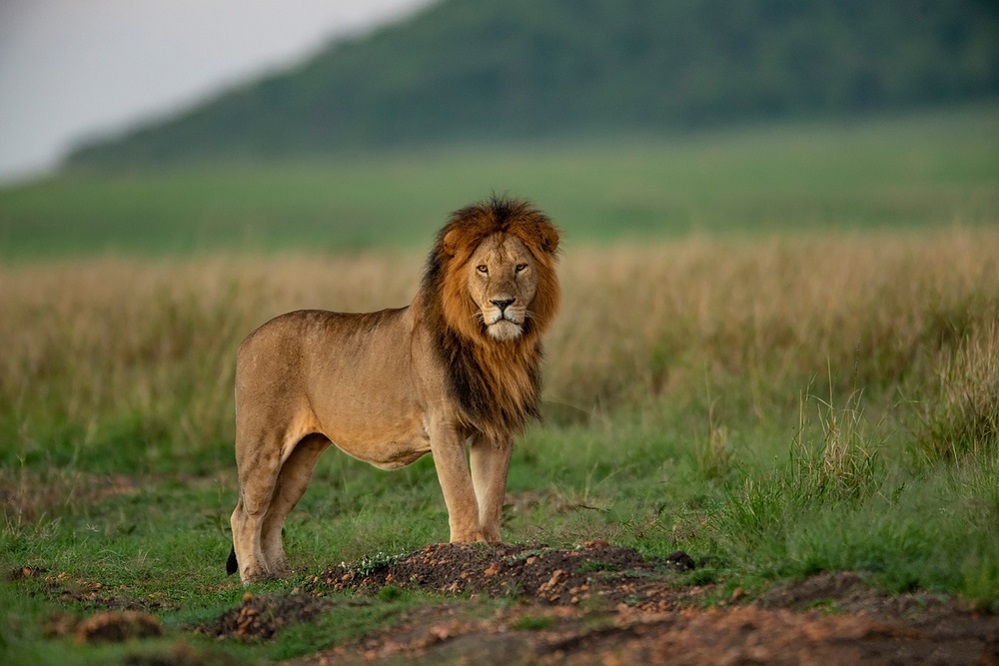
Size
Male lions are typically larger and heavier than females. On average, male lions weigh between 330 to 550 pounds (150 to 250 kilograms), while females weigh slightly less, ranging from 265 to 400 pounds (120 to 180 kilograms). Standing at around 4 feet (48 inches) tall at the shoulder, male lions can reach lengths of up to 8 feet (96 inches), while females can grow up to 6.5 feet (78 inches) in length, excluding the tail. The tail can contribute an additional 2-3 feet (28-37 inches) to the lion’s total length.
Color
Lions have short, tawny-colored fur, with the underside often displaying lighter shades such as white or cream. Their outer coat can have different colors like brown, gold, tawny, and blonde. Newborn cubs have dark spots on their coats, which fade as they mature.
Mane
The mane is a sign of maturity, strength, and dominance in lions. It can vary in color from blond to black, red, and brown, and tends to darken as lions age. The mane covers the head, neck, and chest of male lions, making them visibly distinct from females. It is the only unique case among the felines where males and females actually look different.
Distribution and Habitat
Here are the details about the historical distribution of lions and their habitat:
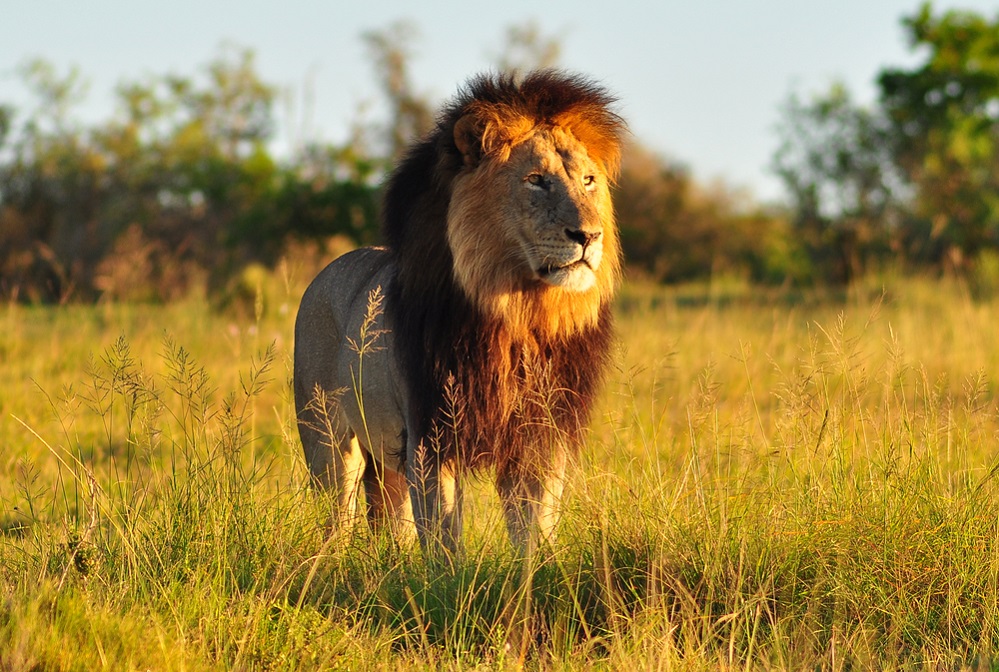
Lions Distribution
African lions inhabit various countries such as Angola, Botswana, Mozambique, Tanzania, the Central African Republic, and South Sudan, among other parts of sub-Saharan Africa.
Asiatic lions are found only in the Indian state of Gujarat in Western India.
Lions Habitat
African lions typically live in their natural habitat comprising savannas, grasslands, woodlands, and semi-arid regions, where they can hunt large herbivores such as wildebeest, zebras, and buffalo and access an ample water supply.
Asiatic lions are found only in the Indian state of Gujarat in Western India, where most reside in the protected Sasan Gir National Park, which includes a deciduous forest, grasslands, scrub jungle, and rocky hills.
Interesting Facts About Lions
Here is the list of some amazing facts about Lions you need to know:
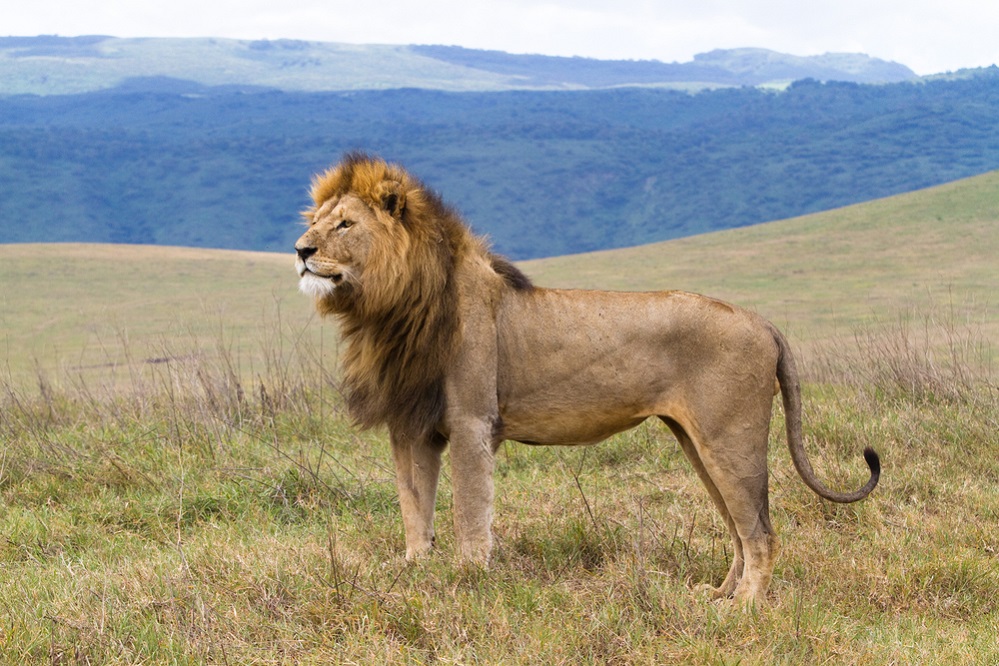
- A lion’s roar can be heard up to 5 miles (8 kilometers) away.
- Lions are considered the kings of the savanna.
- The main hunters within the pride are the lionesses.
- Like domestic cats, lions possess retractable claws, which they use for gripping and climbing.
- The lion animal is considered one of the “African Big Five” animals.
- The heaviest lion ever recorded, weighing 690 pounds, was shot in South Africa in 1936.
- Typically, prides comprise around 80% females.
- Lions possess strong swimming abilities and can cross rivers and streams when required.
- Newborn cubs are born blind and depend on their mothers for care and protection.
- Lions typically give birth to litters of 2-4 cubs.
- Lions have amazing night vision.
- Lions are capable of reaching speeds of up to 50 miles per hour (80 kilometers per hour) in brief sprints.
Population of Lions
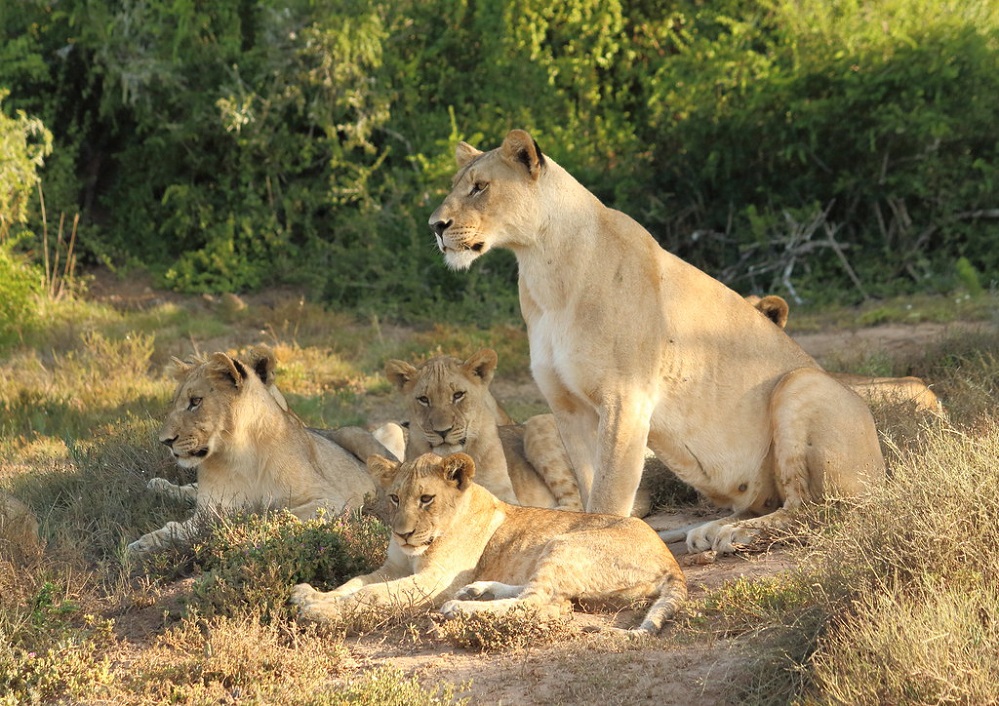
The lion population has faced significant declines in recent decades due to threats like habitat loss, human-wildlife conflict, poaching, and disease. Estimates suggest that lion numbers have dropped by approximately 40% over the past two decades.
Presently, it’s estimated that between 20,000 to 25,000 lions are remaining in the wild, with the majority found in sub-Saharan Africa. In Asia, the population of Asiatic lions is restricted to the Gir Forest in India, where approximately 500 individuals are present.
Reproduction and Lifespan of Lions
Both male and female lions reach reproductive maturity between the ages of two and three. The gestation period for lionesses lasts approximately 110 days, equivalent to roughly 3.5 months. Typically, lionesses give birth to litters of 2-4 cubs, although litter sizes can vary. Newborn cubs are born blind and rely entirely on their mother for care and nourishment during the early stages of life.
During periods of heat, lionesses can copulate with multiple males, engaging in repeated mating sessions throughout the day.
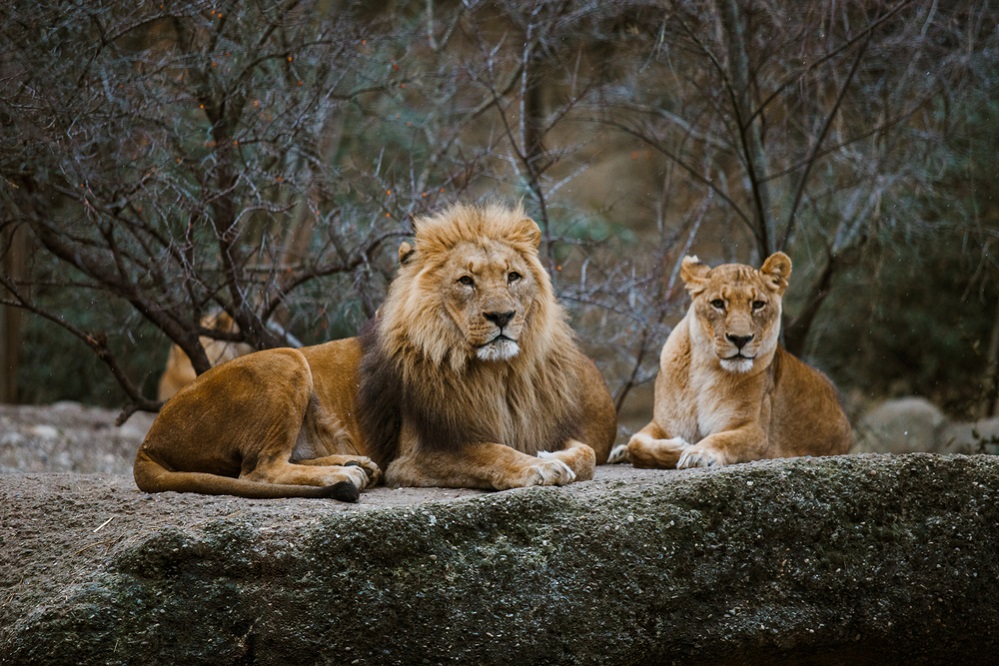
Lion cubs suckle on their mother’s milk until they reach approximately six months of age. Although they do not actively participate in hunting until they are about a year old, lion cubs start to eat meat after approximately 12 weeks.
Tragically, lion cub survival rates are alarmingly low, estimated to be as low as 20%. They face threats from predators such as hyenas, leopards, and other lions, especially males seeking dominance who may kill cubs that are not their own to assert leadership within the pride.
In their natural habitat, lions typically live for about 10-14 years on average. However, lions in captivity often have longer lifespans, with some individuals living up to 20 years or more. The longevity of lions can vary due to a variety of factors.
For instance, in 2016, the Philadelphia Zoo made the difficult decision to euthanize a 25-year-old female lion due to declining mobility issues.
The social structure within a pride also plays a role in determining individual lifespan. Lions with higher social status often have better access to food resources and mating opportunities, which can contribute to a longer life.
Hunting and Diet
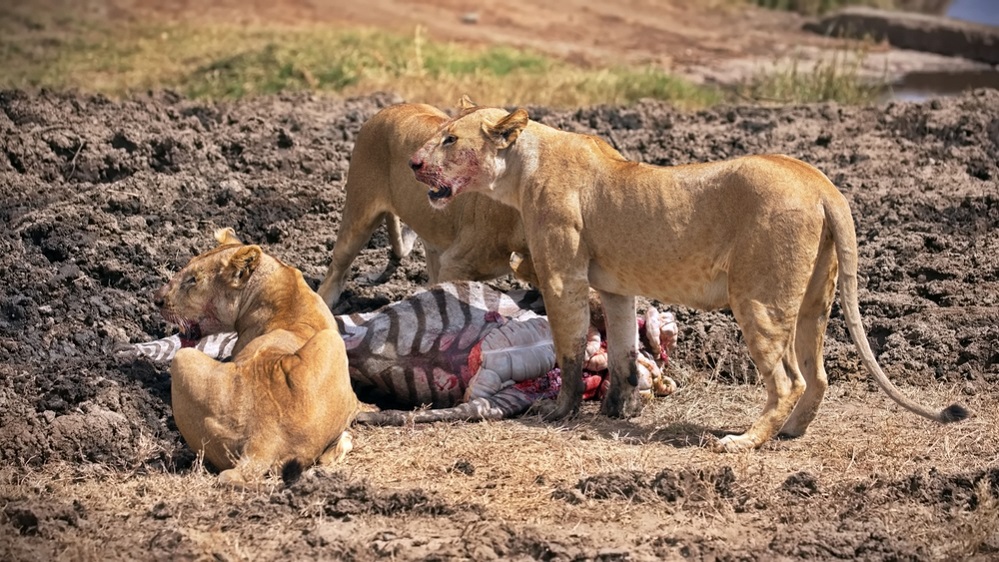
Lions are hypercarnivores that survive only by eating other animals. According to the Smithsonian National Zoo, female lions consume approximately 11 pounds of meat daily, while males consume about 15 pounds. These carnivores are capable of taking down prey weighing up to 1,000 pounds (450 kg), showcasing their formidable hunting abilities.
Their diet primarily consists of large herbivores such as zebras, deer, wildebeests, buffalo, antelope, and occasionally larger prey like giraffes and small elephants. Despite their strength, lions have limited stamina and conserve energy by hunting at night.
In lion prides, females assume the role of primary hunters, working cooperatively in hunting parties to surround and capture prey. Lions use strategic tactics, often jumping on the backs of very large animals to bring them down. They use their powerful jaws to snap the animal’s neck or strangle it to death.
However, once the prey is caught, circumstances change within the pride. Females typically allow the male lion to eat first, followed by themselves. Unfortunately, lion cubs are at the bottom of the hierarchy and must wait until the adults have finished before they can eat the remains of food.
Extinct Lion Species
Here are several extinct lion species, identified through research and fossil discoveries:
- Cave Lion (Panthera leo spelaea)
- European Lion (Panthera leo europaea)
- American Lion (Panthera leo atrox)
- Sri Lankan Lion (Panthera leo sinhaleyus)
- Cape lion (South Africa)
Predators and Threats to Lions
Despite their status as apex predators, lions face numerous threats and have predators within their natural habitat.
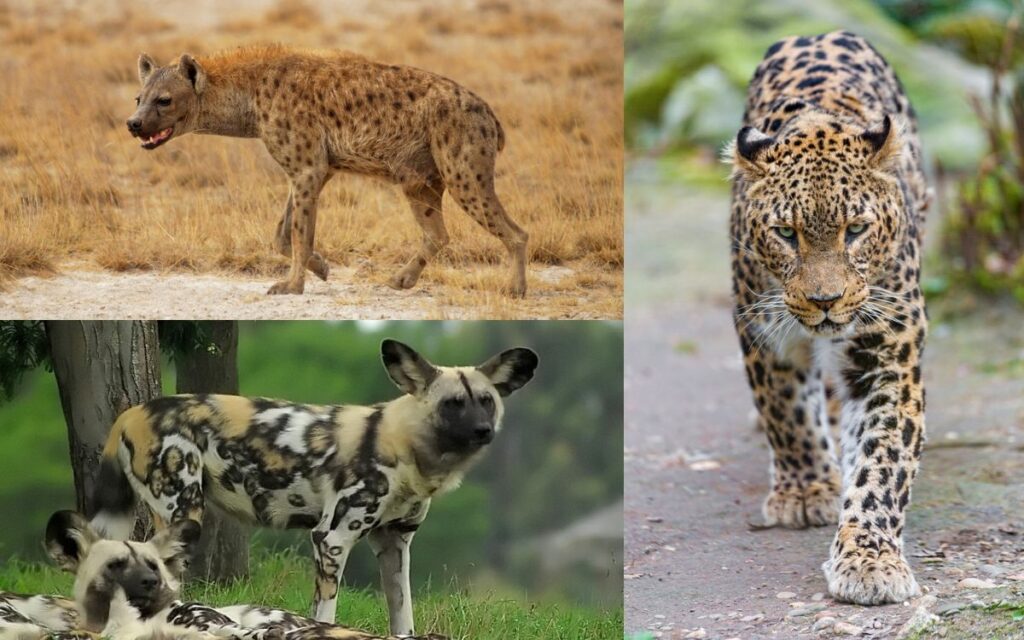
Predators
- Hyenas
- Leopards
- Cape Hunting Dogs
- Large Pythons
- Humans
Threats
- Habitat Loss
- Poaching
- Climate Change
- Human-Wildlife Conflict
- Illegal wildlife trade
- Decline in Prey Species
Interactions With Humans
Lions have been admired and feared by people for centuries. However, due to hunting and expanding human settlements, lions have been wiped out from a vast portion of their historical natural range. These interactions encompass various contexts such as zoos, circuses, hunting expeditions, games, and encounters with man-eaters.

The historical relationship between humans and lions has been complex and fraught with challenges. Lions have faced relentless hunting pressure from humans for various purposes, including sport, trophies, and demonstrations of prowess and bravery. The demand for lion skins, bones, and other body parts in traditional medicine and cultural practices has intensified hunting activities.
Additionally, lions have been exploited for entertainment in zoos, circuses, and captive breeding facilities. Moreover, some lions have turned to preying on humans, driven by habitat loss, dwindling prey populations, and conflicts with humans.
Incidents involving African lions sneaking into villages in search of food. These lions are known to attack up to 700 people every year, with Tanzania alone reporting approximately 100 human fatalities annually due to lion encounters.
One infamous incident occurred in 1898 in Kenya, where two lions known as the Tsavo lions, distinguished by their lack of manes, gained notoriety for killing and consuming over 130 railroad workers within a span of about nine months.
FAQs
Are Lions Endangered?
Currently, the lion is categorized by the IUCN as Vulnerable to extinction in its natural habitat in the near future. Global lion populations have declined by an estimated 40% over the past two decades. The Asiatic subspecies of lions is listed as “Endangered” by the IUCN, with only about 600 individuals living in a single forest.
What Is the Average Lifespan of Lions?
Lions typically live for about 10 to 14 years in the wild. However, in captivity, they can live longer, with some individuals reaching up to 20 years of age or more.
What Is Another Name for the Lion?
The “African Lion” is another name used to refer to the lion.
How Fast Is a Lion?
Lions can run at speeds of up to 50 miles per hour (80 kilometers per hour) in short sprints.
How Do Lions Communicate?
Lions communicate through vocalizations such as roars, grunts, and growls, as well as through body language and scent markings.
How Many Hours Do Lions Sleep per Day?
Lions are known to sleep for an average of 16 to 20 hours per day.
How Many Teeth Do Lions Have?
Lions have 30 teeth, including sharp incisors, canines for gripping and tearing, and molars for chewing.
How Long Is the Gestation Period of a Lioness?
The gestation period for a lioness lasts approximately 110 days, or roughly 3.5 months.
How Loud Is the Lion’s Roar?
The lion’s roar can reach volumes of up to 114 decibels and can be heard from a distance of about 5 miles away (8 km).
Why Do Male Lions Have a Mane?
The mane of male lions serves mainly social and reproductive functions, as it attracts female lions.
Which Is Bigger, a Tiger or a Lion?
Tigers are generally bigger than lions.
Final Words
Lion’s survival encounters unprecedented challenges in today’s world. It is imperative that we work collectively to conserve and protect lions and their habitats. Through collaborative initiatives involving governments, conservation organizations, local communities, and individuals, we can develop sustainable solutions to protect the future of the King Of the Jungle.



